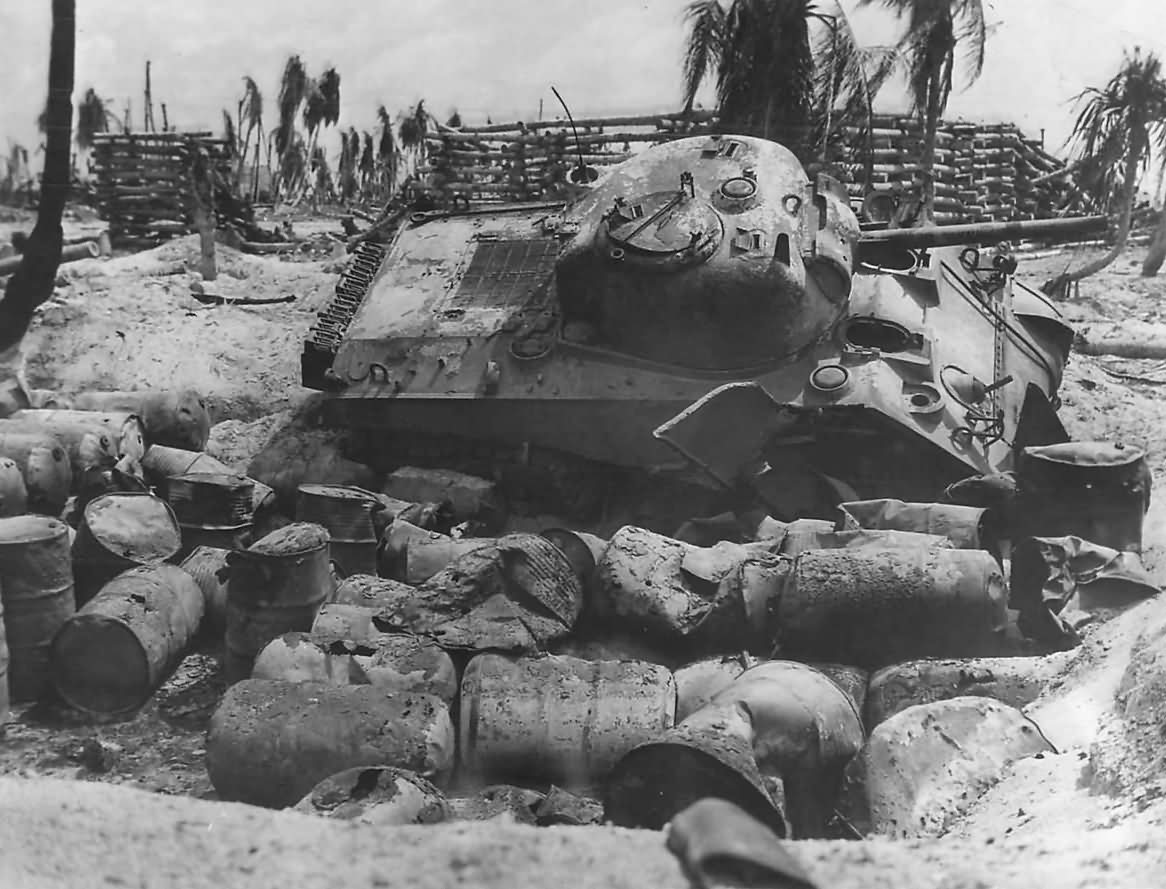The Battle of Tarawa, beginning on November 20, 1943, was a harrowing and pivotal moment for Marine tank operations. This battle, fought on the coral atolls of the Gilbert Islands, was notable for several reasons:
First Use of Medium Tanks: Tarawa marked the first deployment of Marine medium tanks, specifically the M4A2, from the I Marine Amphibious Corps (IMAC) Tank Battalion. This was also the first time Marine tanks had to disembark from landing craft while under enemy fire.
Initial Tank Landings: The first tank landings occurred on Beach Red I, where six M4A2 medium tanks were dropped 1,200 yards offshore. These tanks faced significant challenges:
- Obstacle Avoidance: The drivers encountered a thick carpet of wounded and dead Marines, prompting them to move to the flanks of the landing area.
- Environmental Hazards: Many tanks became bogged down or suffered engine damage from shell holes created by the pre-invasion bombardment. Only two tanks made it to shore initially.
Combat Difficulties:
- Damage and Losses: Tanks like “Chicago” and “China Gal” faced immediate difficulties. “China Gal” was jammed by a hit but managed to disable a Japanese Type 95 light tank through ramming.
- Operational Challenges: Of the initial tanks, only four remained operational by the end of D+1. Some tanks were damaged by artillery and magnetic mines, while others became immobilized in shell holes.
M3A1 Light Tanks: These tanks, from Companies B and C, 2nd Tank Battalion, also faced difficulties:
- Landing Issues: Many M3A1s were lost before reaching the shore due to sinking landing craft.
- Combat Ineffectiveness: The 37mm guns of M3A1s were largely ineffective against Japanese bunkers. Tankers had to close in and fire high-explosive rounds directly into bunkers.
Impact and Lessons:
- Tank Policy: The battle highlighted the inadequacy of the M3A1 light tanks and underscored the value of the M4A2 medium tanks.
- Waterproofing: It became clear that effective waterproofing was crucial for amphibious landings due to the possibility of tanks having to wade through deep water.
- Countering Mines: The threat of Japanese magnetic antitank mines was significant.
- Flamethrowers: The need for tank-mounted flamethrowers to deal with Japanese bunkers was emphasized.
